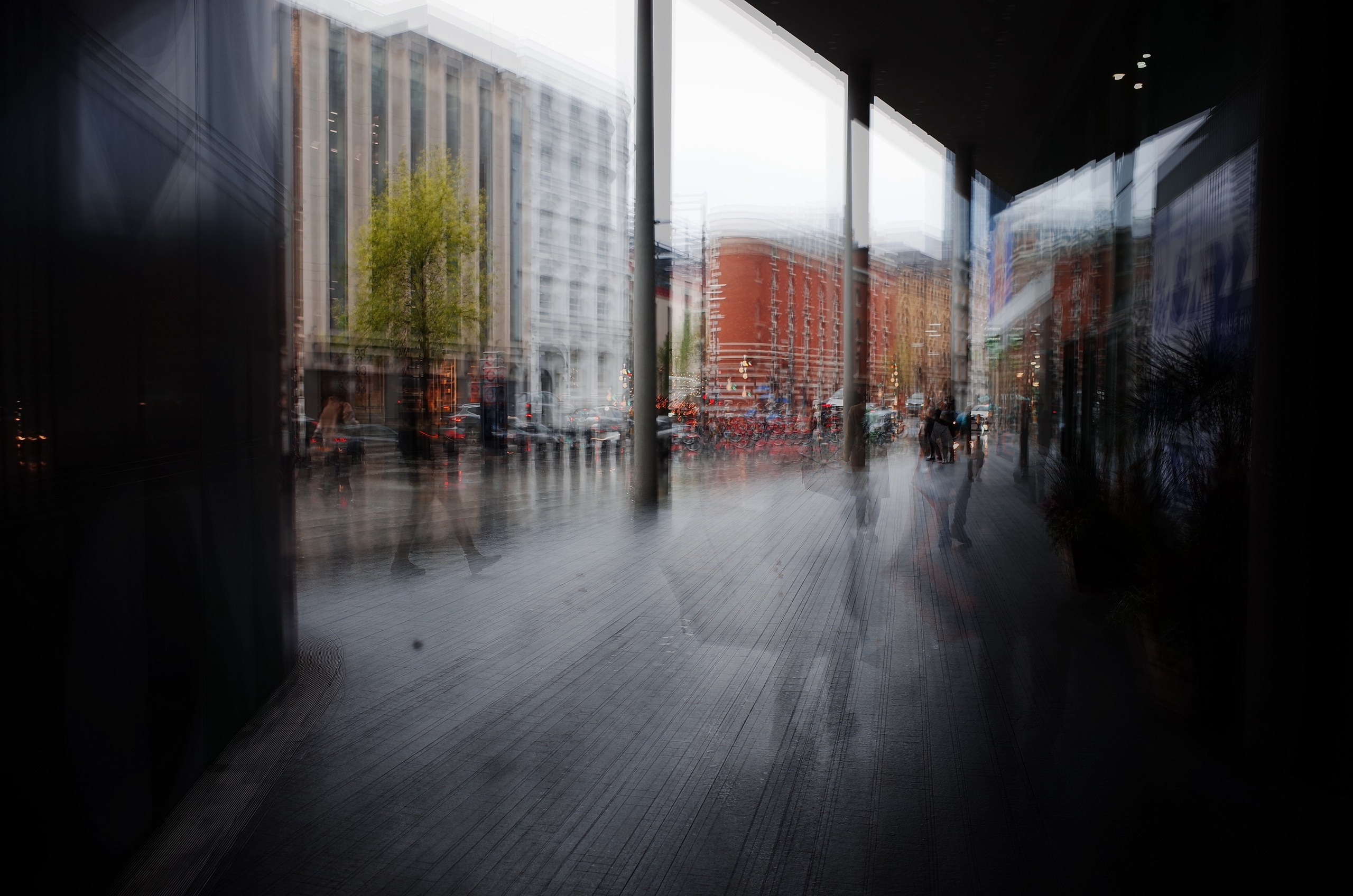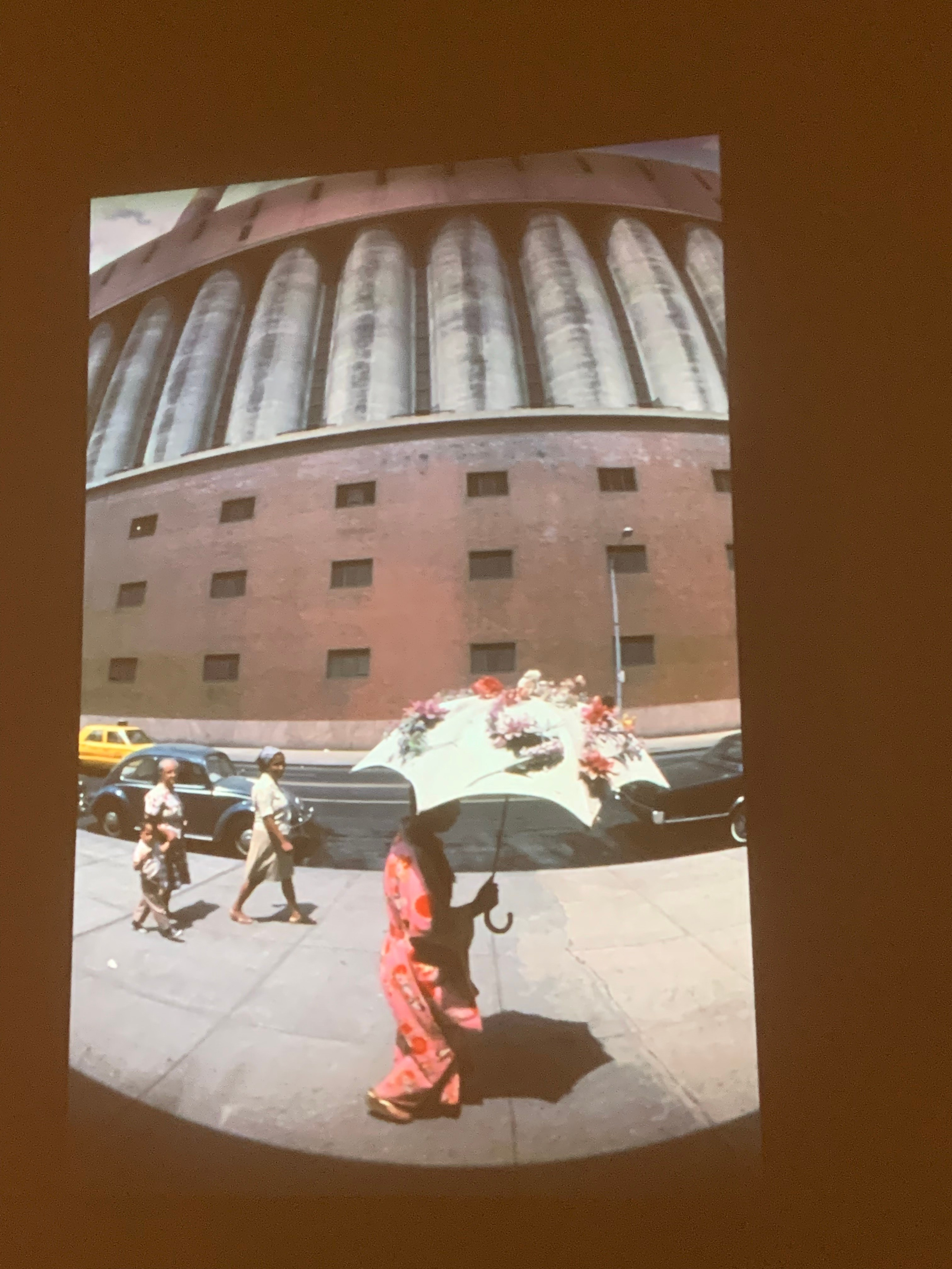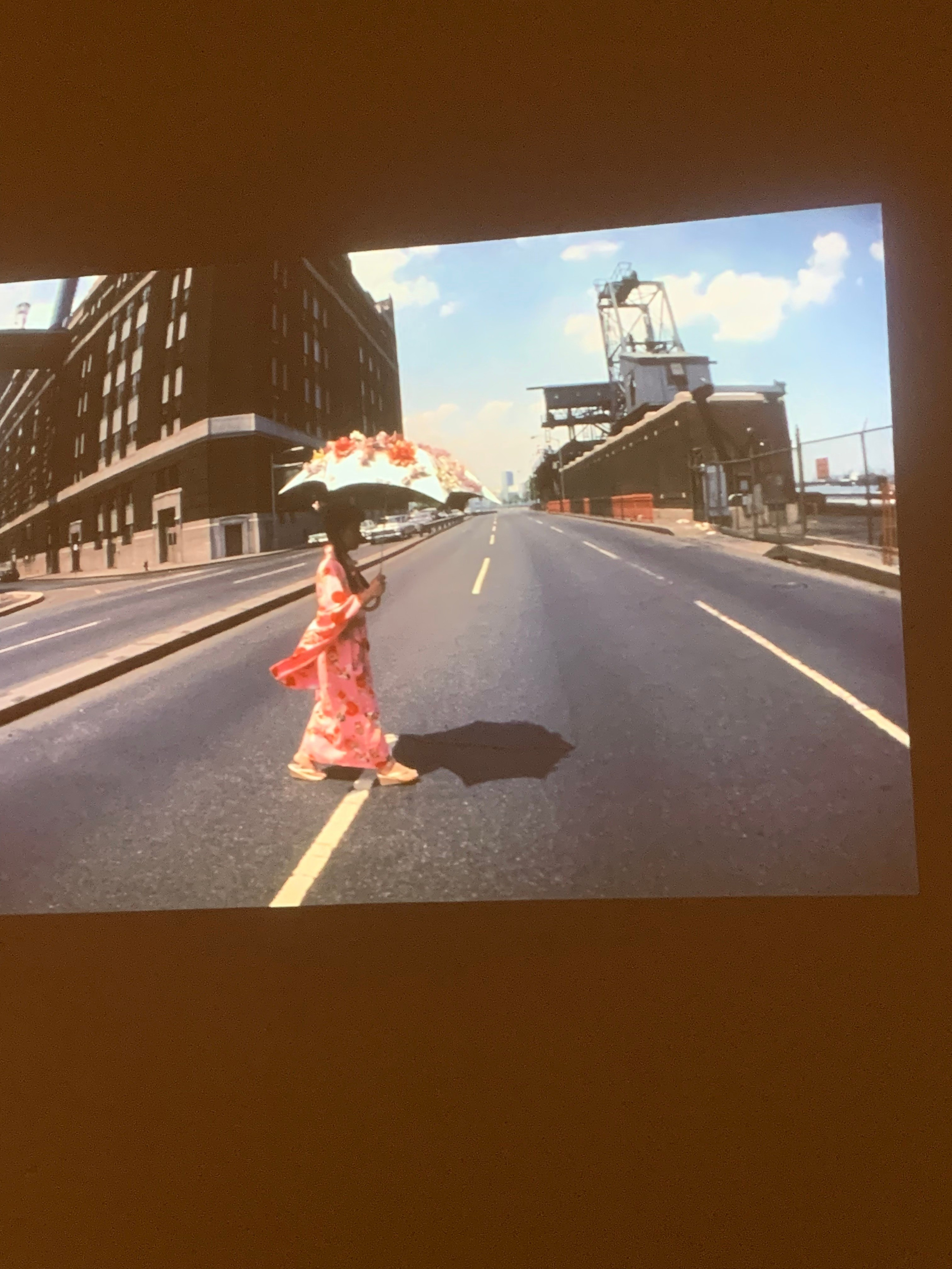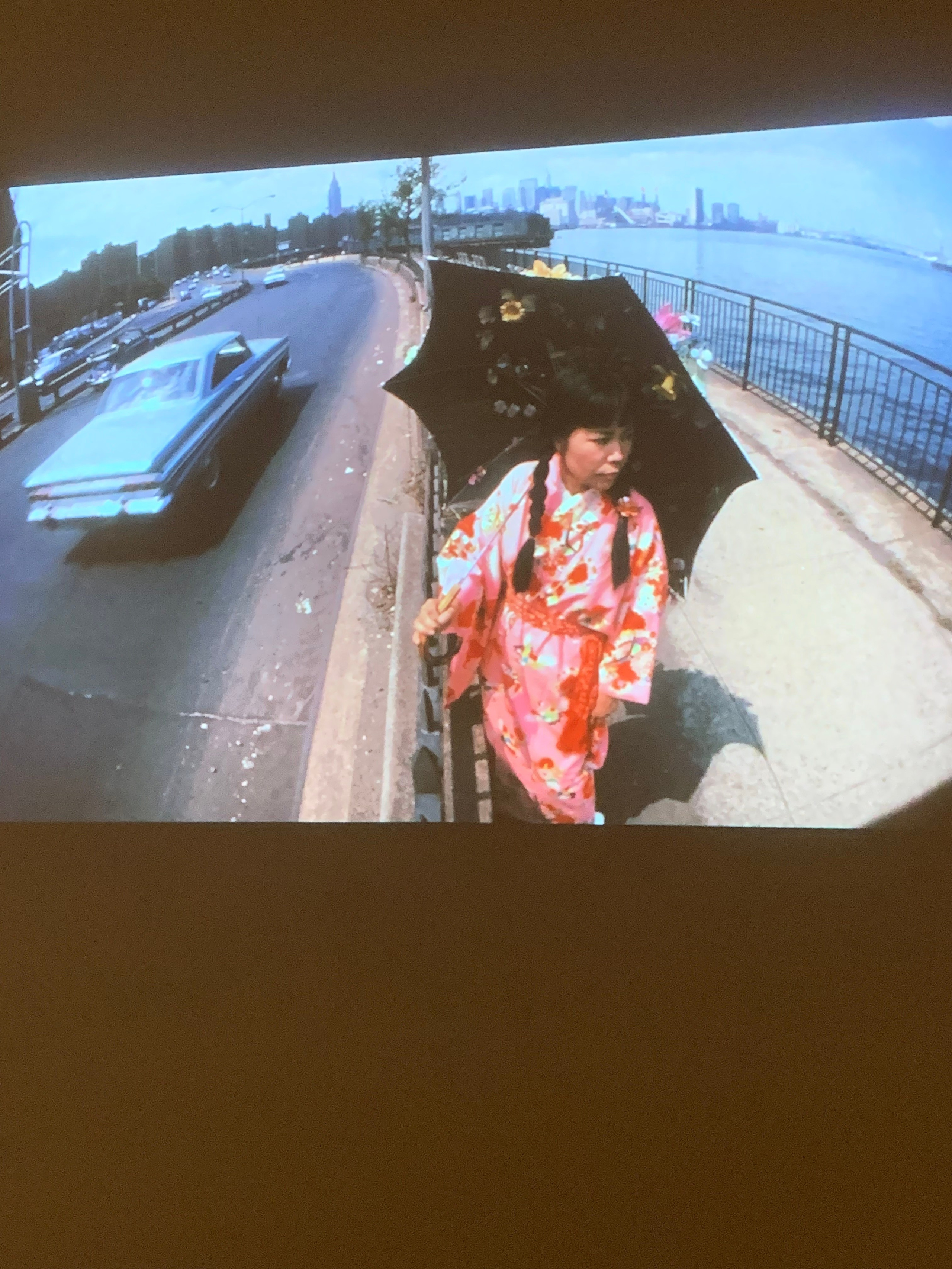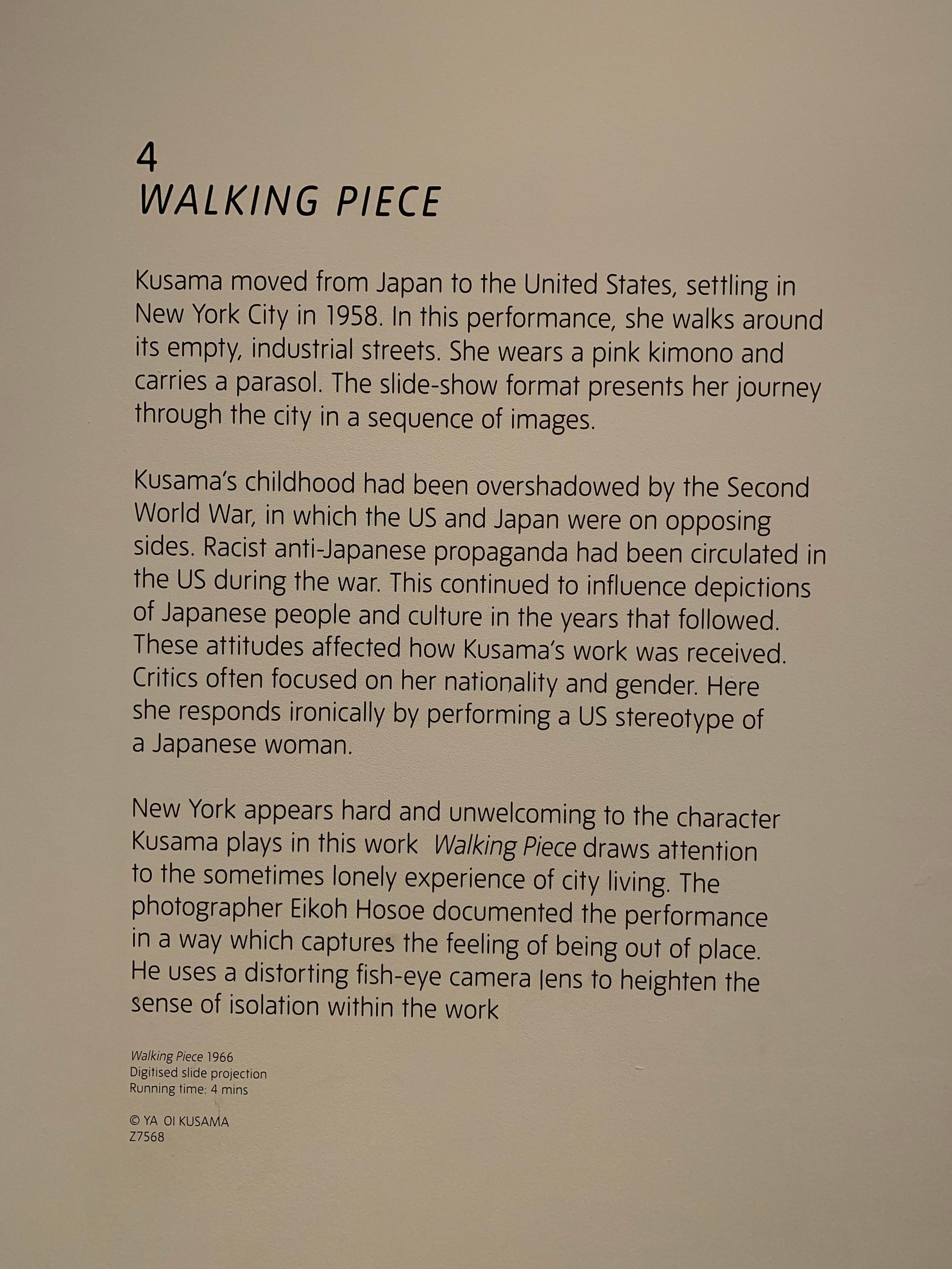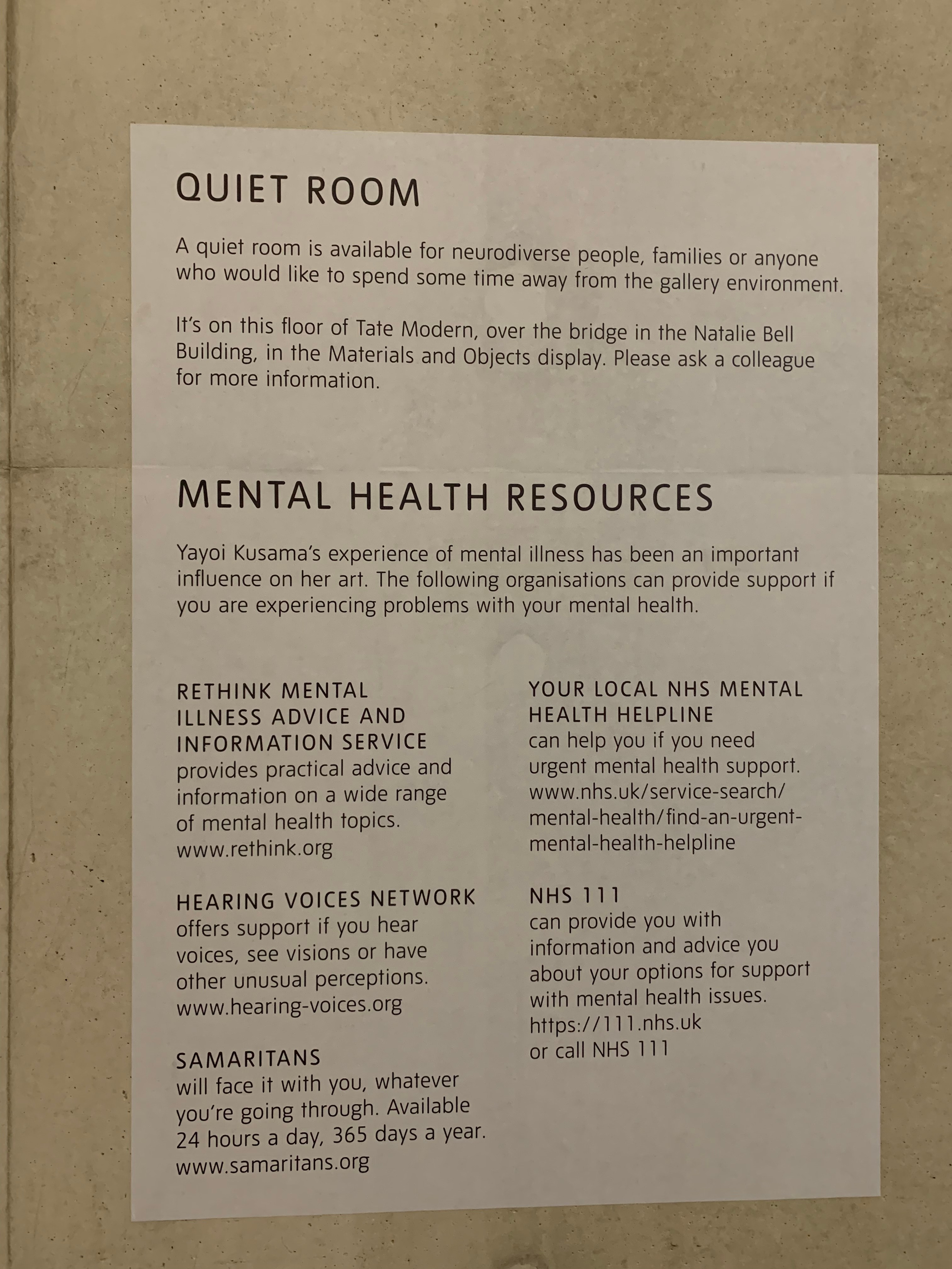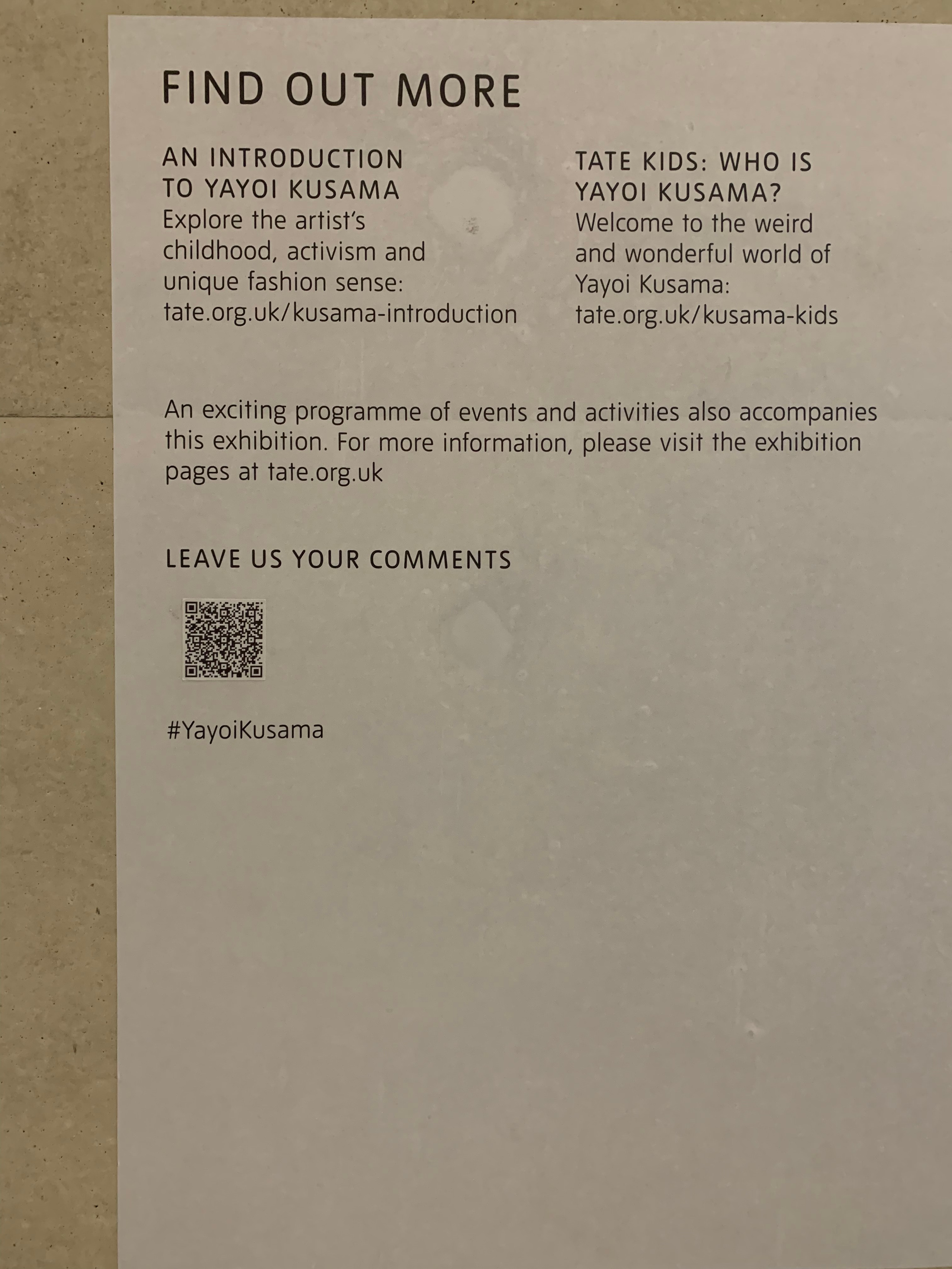For me, the art Kusama make is very simple in the most brilliant way — you can feel it in your body, in your heart. It’s so far of being cold and intellectual, although one can describe her art in a very conceptual way, of course. But it doesn’t need this desrciption to be understood and to work so strongly it works.
(and that’s what I feel to Japan art in general, especially to literature and photography. I totally don’t get theatre though)

Two descriptions, two rooms to go into and feel physically, I read one description before the visit and the other after, and exactly those feelings were in me! A thrilling absolutely physical joy, and a fading distant sadness.
I love it when you get that kind of rapport with the artist. And I love it when the text stays simple.
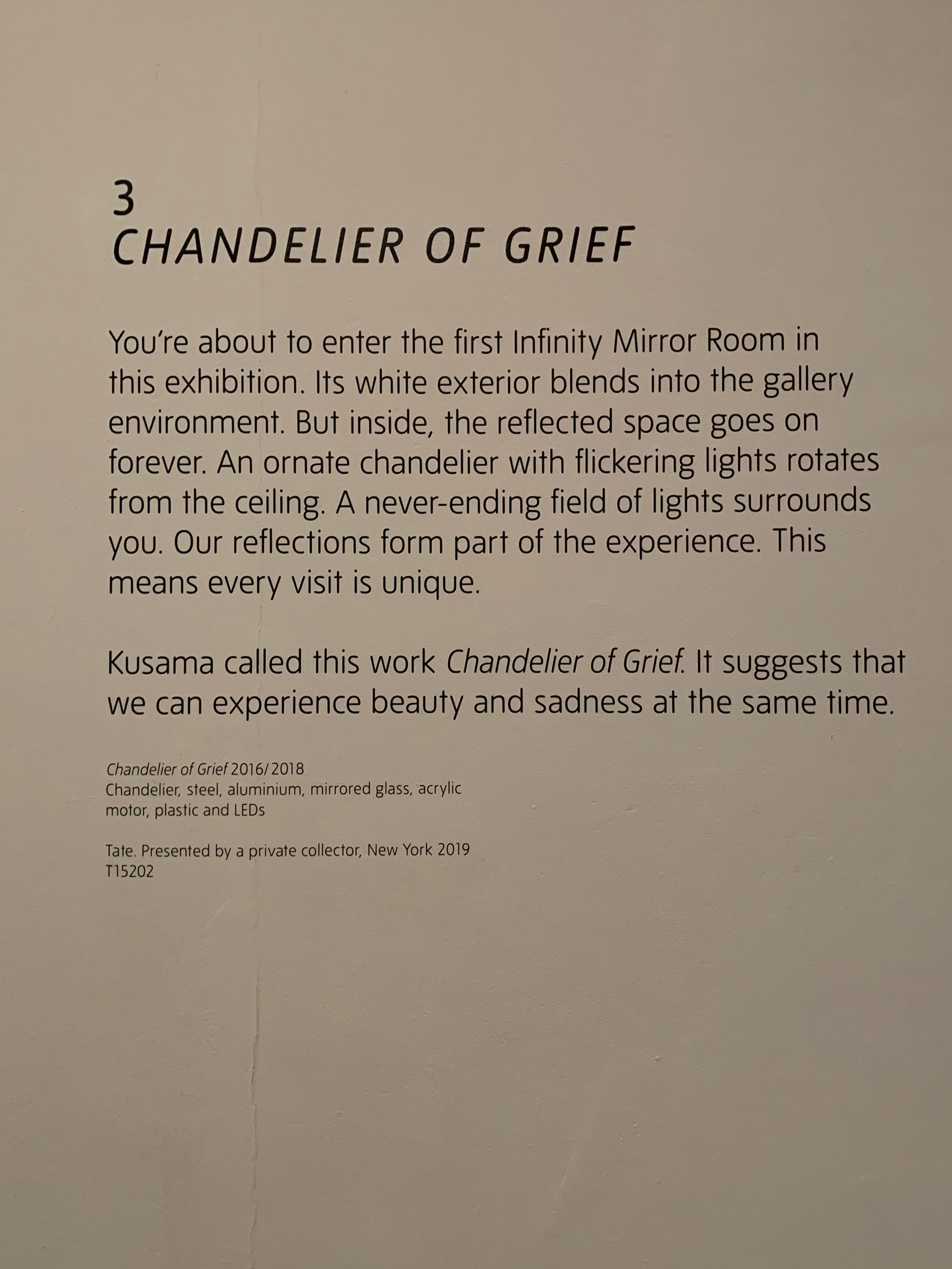
Kusama to me is an example of following herself very precisely, despite the fact that she was not particularly understood or supported in her early years — even though she is now one of the most famous artists.
She is absolutely amazing. As a young girl, she ran away from Japan to New York, taking her work with her. She organised performances and Happenings there. Later, she came back. All her life she suffered from hallucinations and for twenty years she has been living in a psychiatric clinic where her studio is located. She works all the time.
Such a sting at an exhibition about Japanese women artists who were despised and etched FOR JAPAN’S WAR. hello, Russian women artists, I see you
Kusama had to deal with this back in the sixties, and there we are again.
Blog. Artist’s Diary
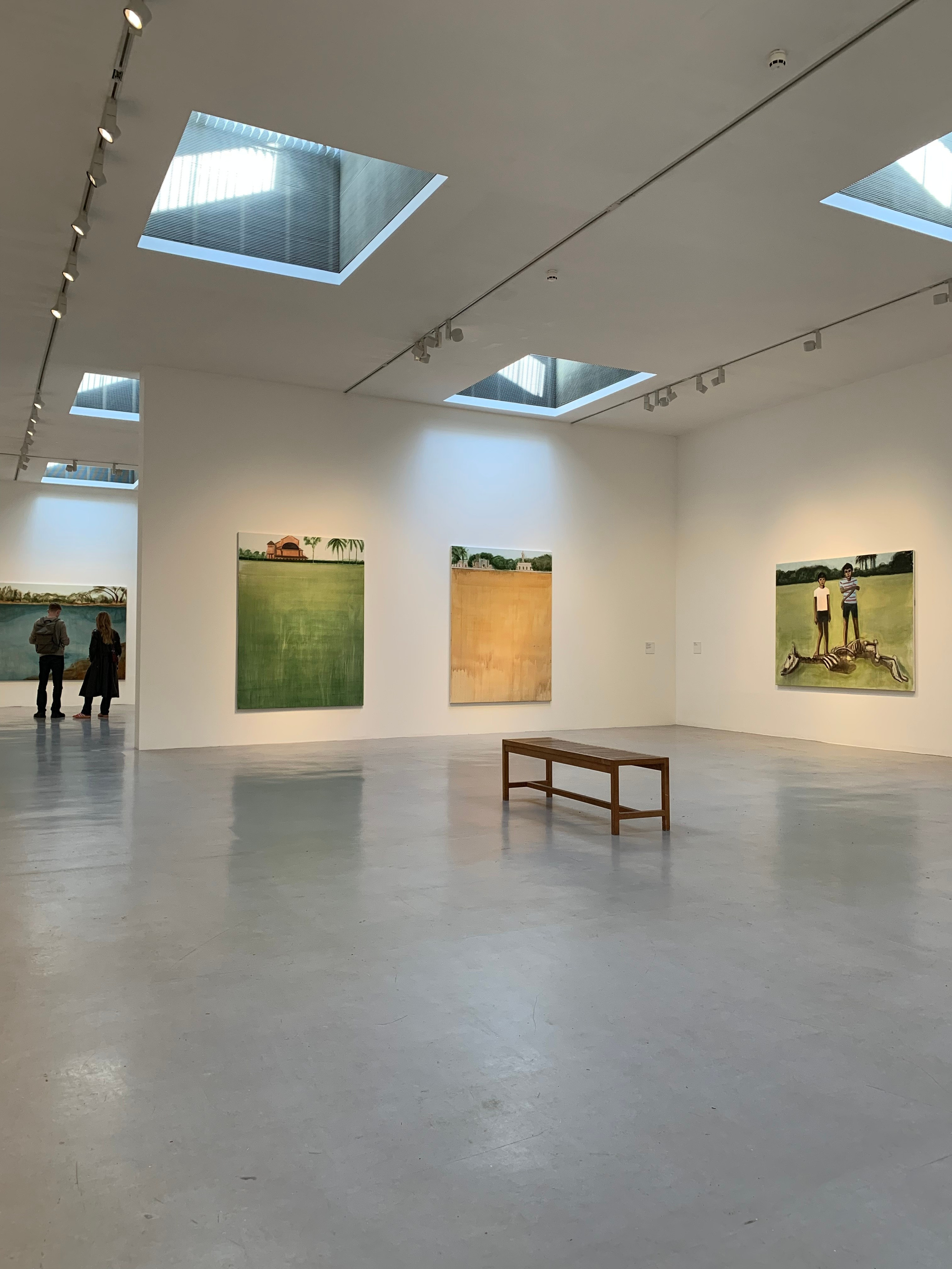
Camden Art Centre
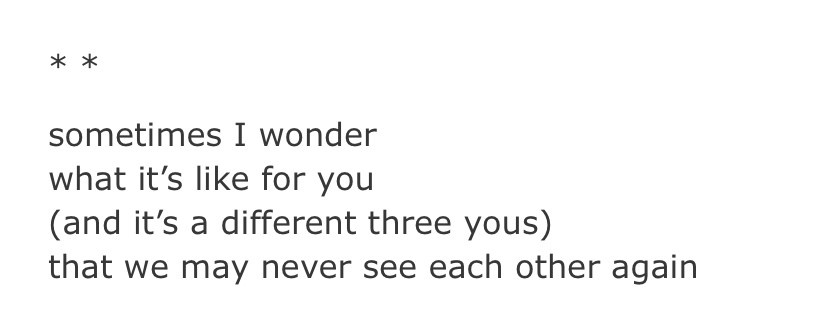
I translated one of my poems into English

Baby Reindeer
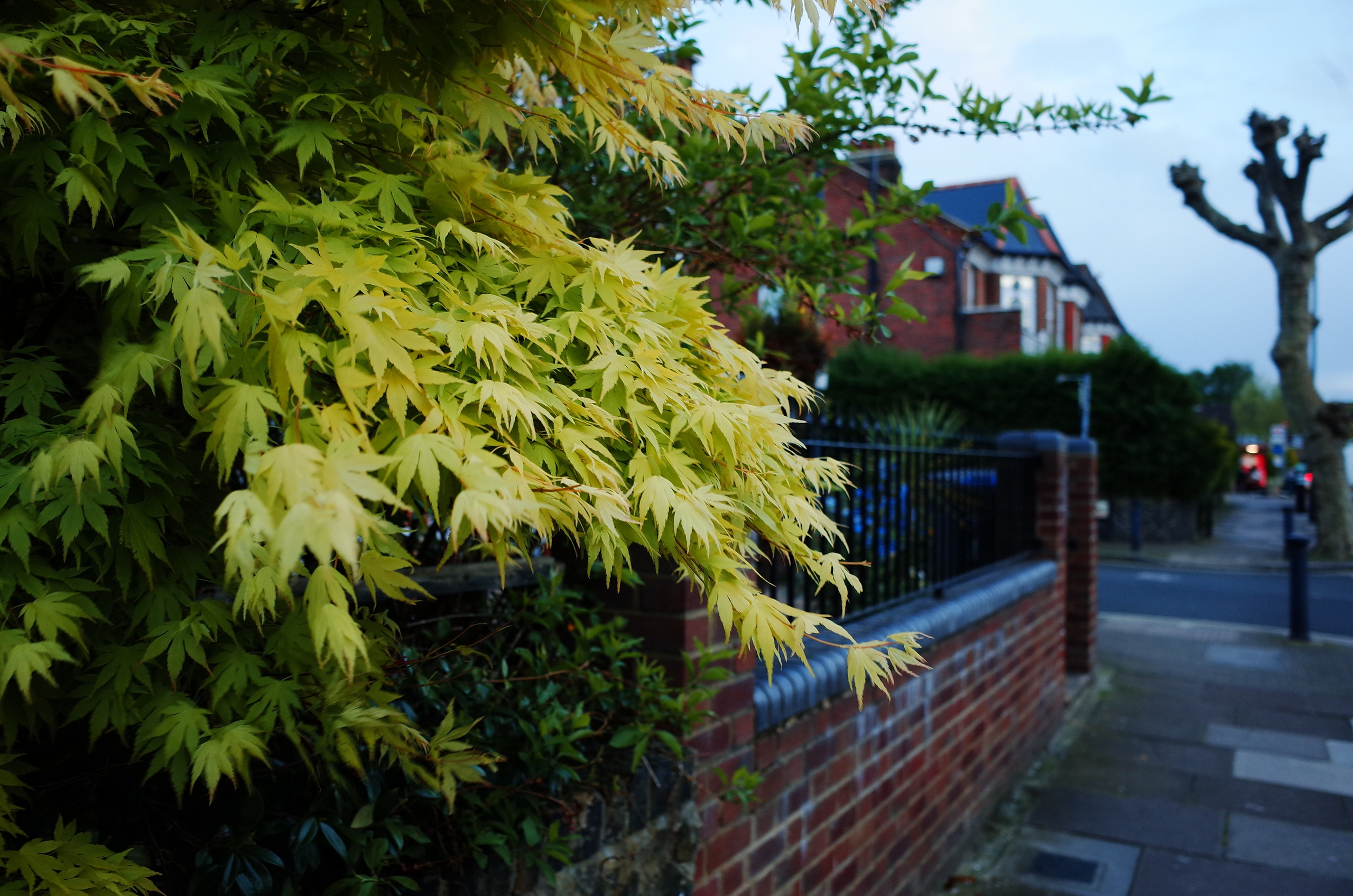
A flaming bush
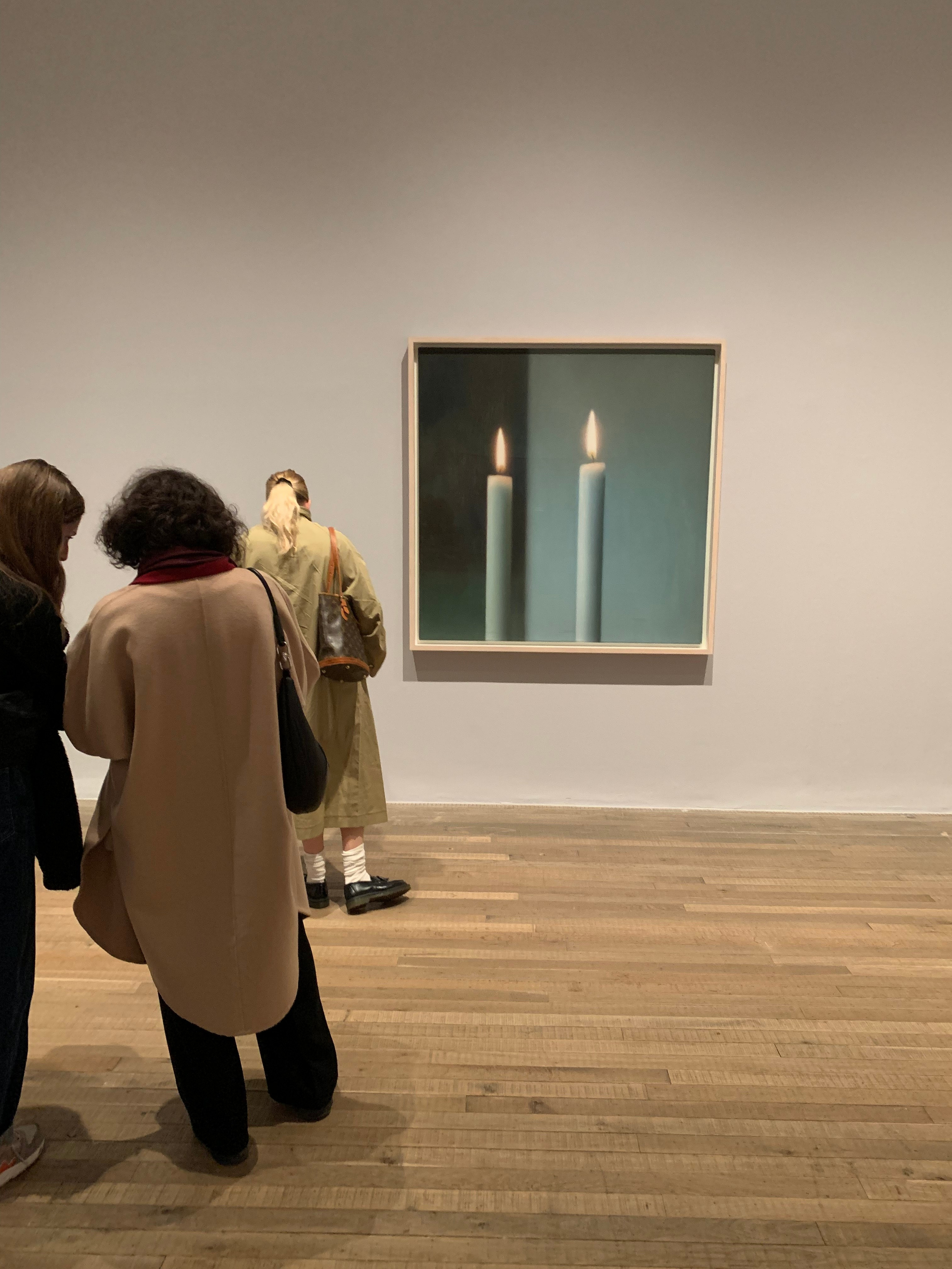
Capturing the moment at Tate Modern
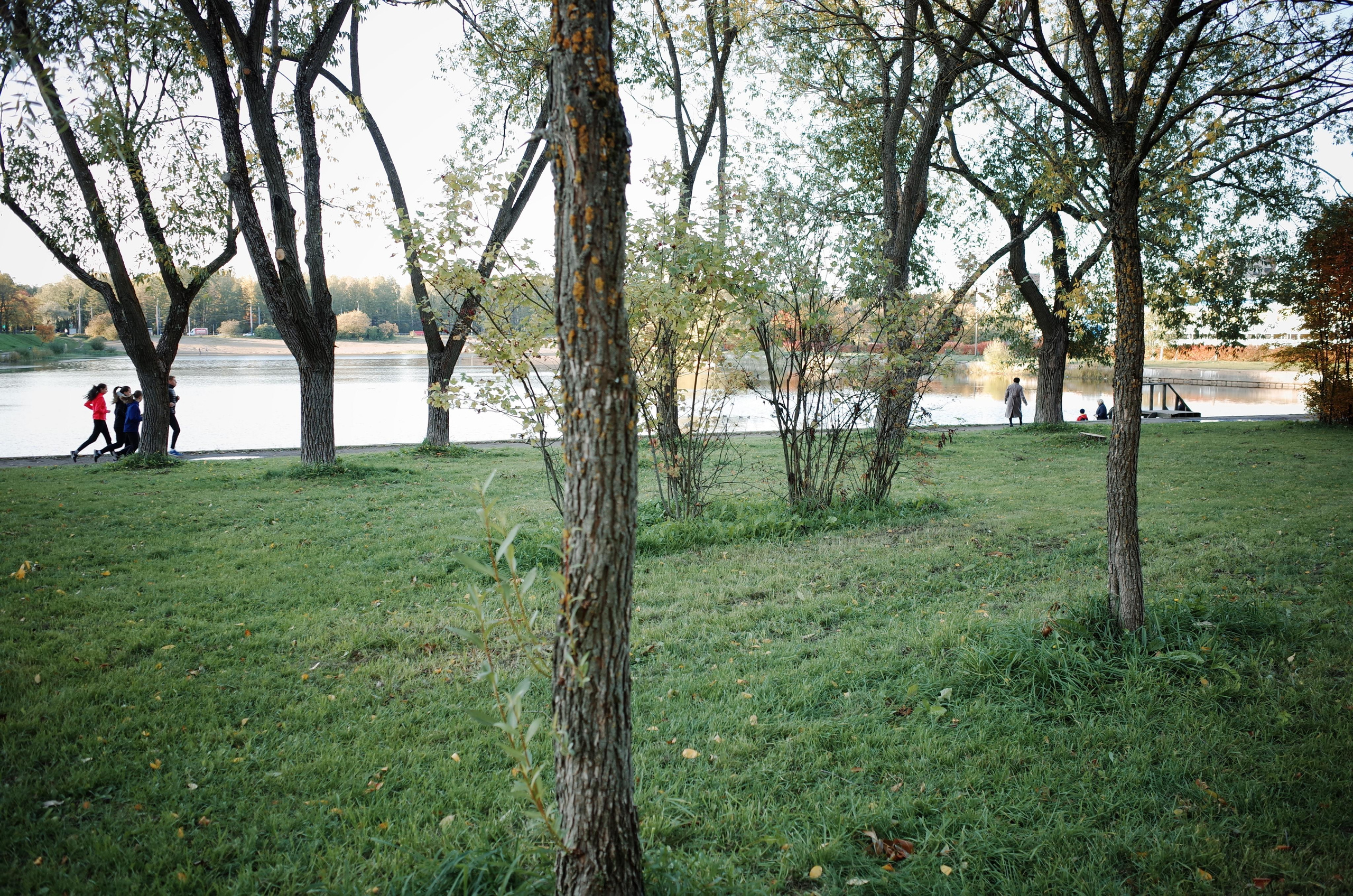
Little magic everythere
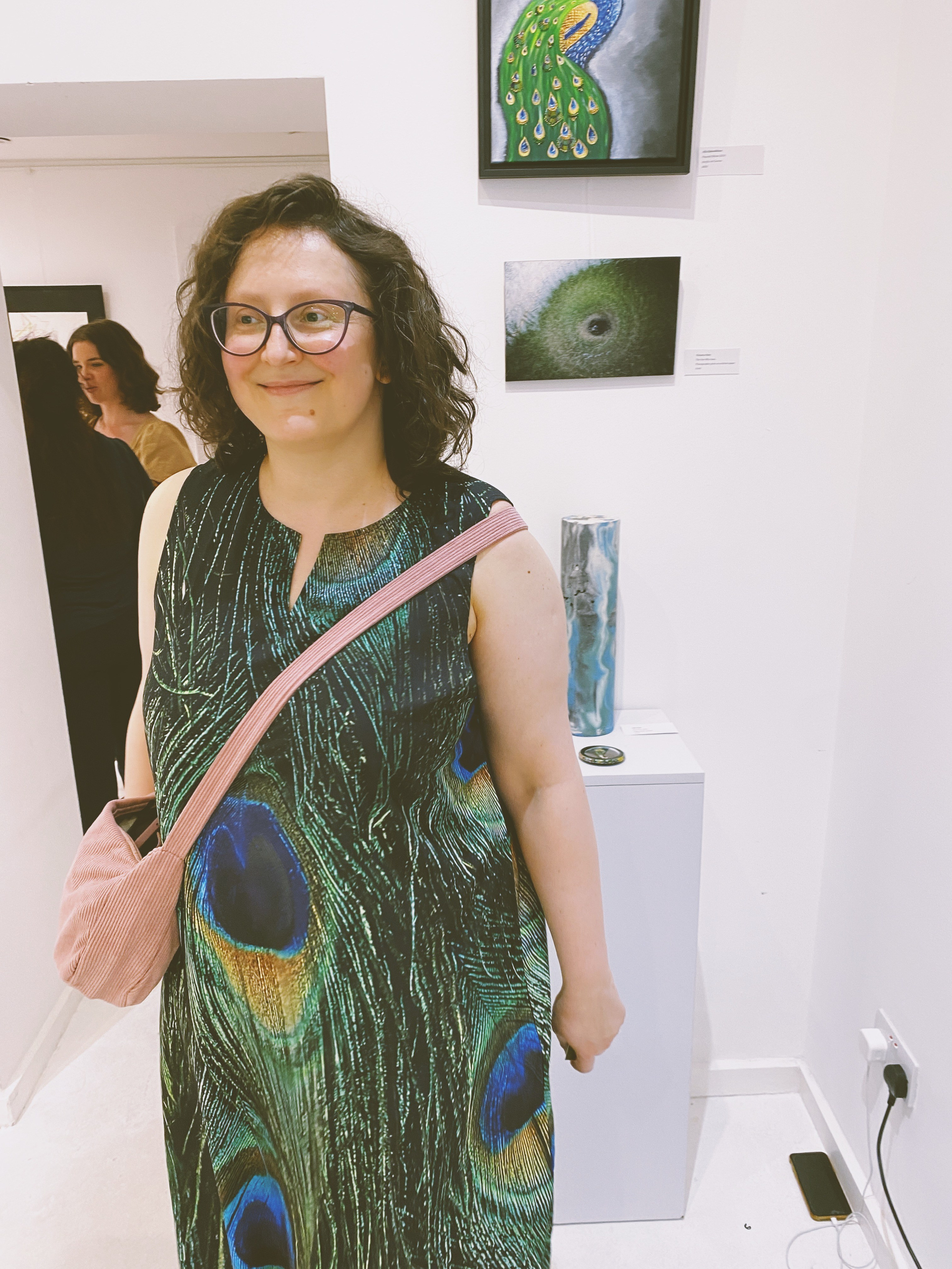
Art Touch Performance
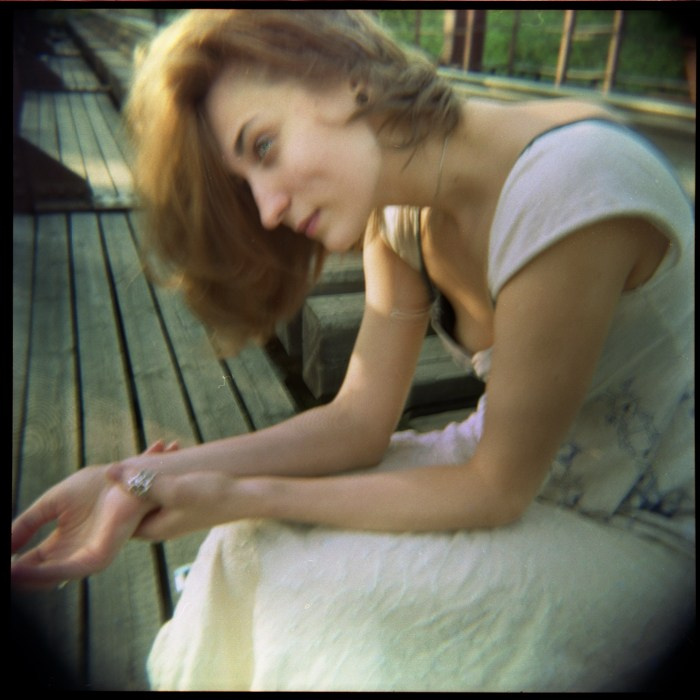
About all the cameras big and small
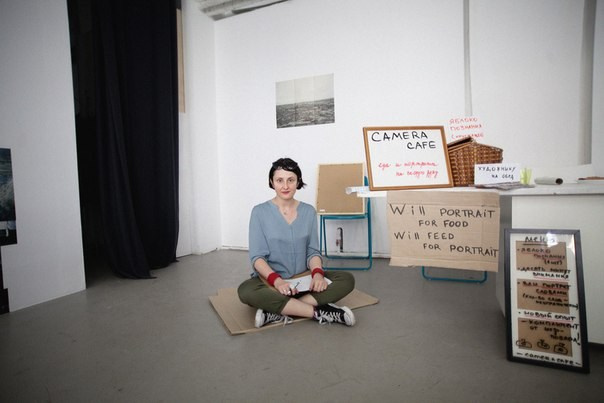
About my old performance
